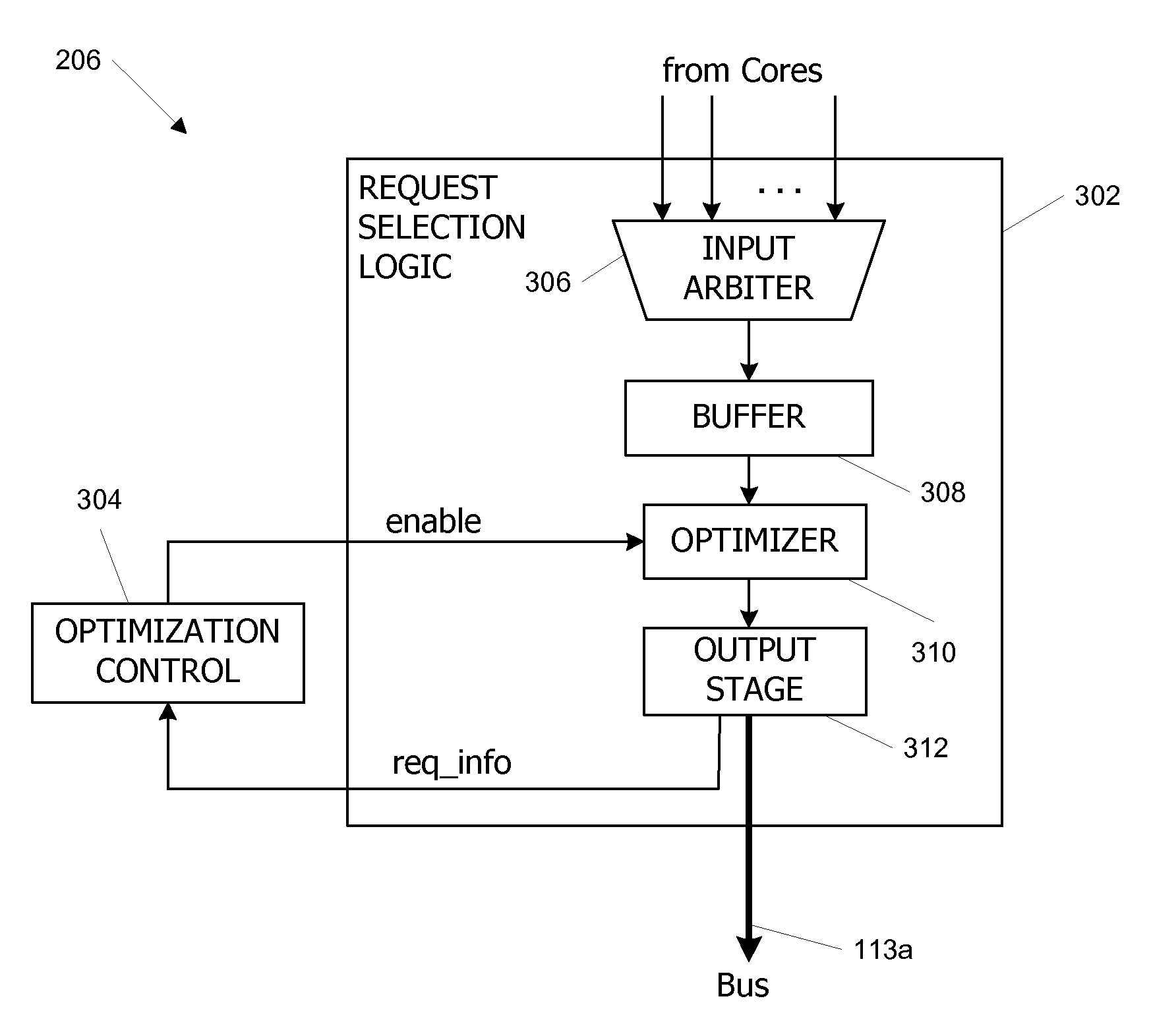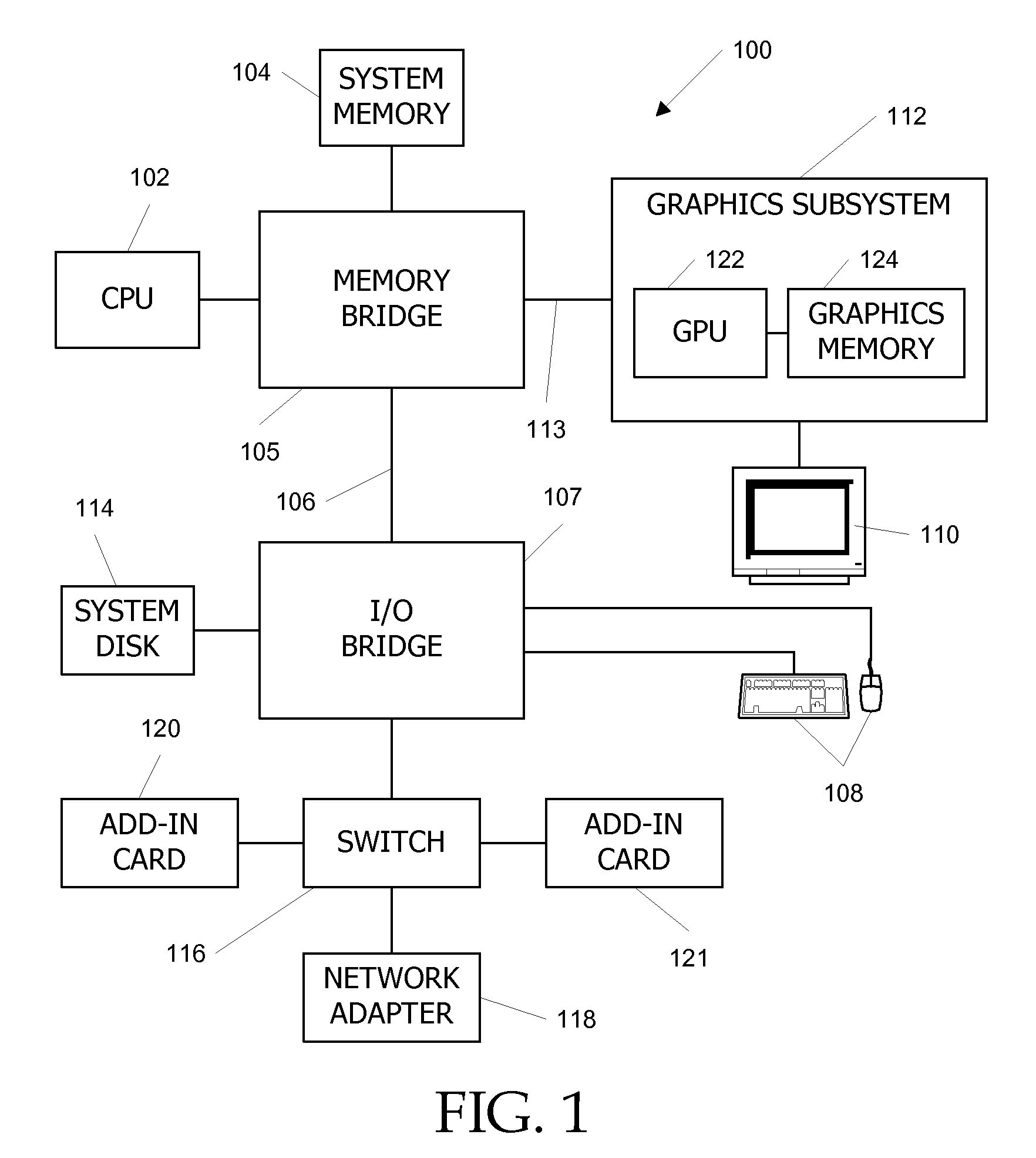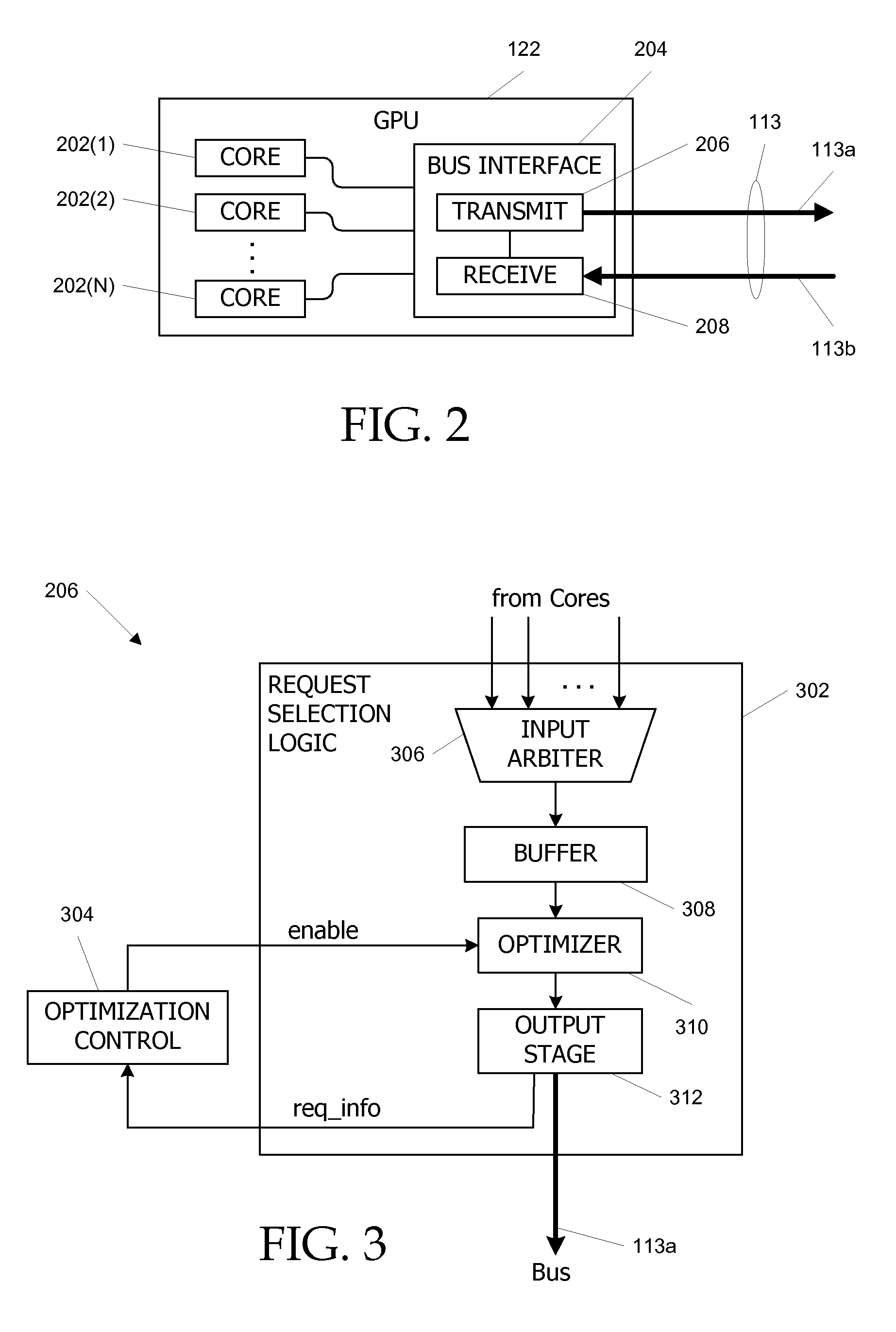Control device for data stream optimizations in a link interface
a control device and data stream optimization technology, applied in the field of bus interfaces, can solve the problems of reducing performance, limiting the performance of graphics processors, and often bandwidth-limited modern graphics processors, and achieve the effect of small area
- Summary
- Abstract
- Description
- Claims
- Application Information
AI Technical Summary
Benefits of technology
Problems solved by technology
Method used
Image
Examples
Embodiment Construction
[0030]Embodiments of the present invention provide bus interface devices and methods of operation in which optimization logic for optimizing a stream of requests being transmitted onto the bus can be enabled or disabled based on a measured level of bus activity. The level of bus activity is measured using a meter circuit that can determine, e.g., the number of data transfer requests that the bus interface device has transmitted within a recent time interval, the amount of data associated with such requests, or the number of requests that the bus interface device has transmitted for which a response from a remote device is pending. The meter, which can be constructed from simple circuit components that consume little area, advantageously does not require extra signals to be carried on the bus or any modification of bus protocol; thus it can be used with any bus. In some embodiments, the bus interface device is integrated into a processor, such as a graphics processor, that makes bus ...
PUM
 Login to View More
Login to View More Abstract
Description
Claims
Application Information
 Login to View More
Login to View More - R&D
- Intellectual Property
- Life Sciences
- Materials
- Tech Scout
- Unparalleled Data Quality
- Higher Quality Content
- 60% Fewer Hallucinations
Browse by: Latest US Patents, China's latest patents, Technical Efficacy Thesaurus, Application Domain, Technology Topic, Popular Technical Reports.
© 2025 PatSnap. All rights reserved.Legal|Privacy policy|Modern Slavery Act Transparency Statement|Sitemap|About US| Contact US: help@patsnap.com



